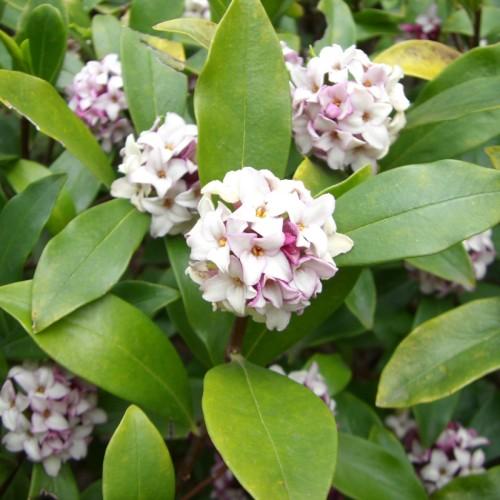
winter daphne
Daphne odora
Cycle:
Perennial
Watering:
Average
Hardiness Zone:
7 - 9
Flowers:
Flowers
Sun:
Part shade
Leaf:
Yes
Growth Rate:
Low
Maintenance:
Moderate
watering
Winter daphne (Daphne odora) should be watered every 7-10 days or when the soil feels dry to the touch. When watering, it’s best to give the plants a deep soak; this involves giving the pot a thorough watering until the water drains from the bottom. Make sure not to overwater, as overwatering can lead to root rot. During the winter when temperatures are cooler, the plant will need far less water. For outdoor plants, only water if temperatures are above freezing.
sunlight
Winter daphne (Daphne odora) grows best in bright, indirect sunlight. It is best to provide it with 4-5 hours of sun per day, preferably in the morning and early afternoon. Avoid positioning it in direct sunlight as this can lead to scorching of the leaves. Winter daphne can also tolerates some shade, however, this can result in fewer blooms.
pruning
Pruning winter daphne should be done once a year, ideally in the spring when the plant is just beginning to break dormancy and heading into active growth. Pruning should be kept to a minimum, as this species thrives on winter pruning and can be damaged by hard pruning. If necessary, remove dead, diseased, and weak branches and shoots, and thin out any overly dense growth near the center of the shrub. Make sure to avoid leaving large, open wounds. Avoid shearing or shaping the shrub and, instead, focus on removing unwanted or overly dense shoots judiciously.
